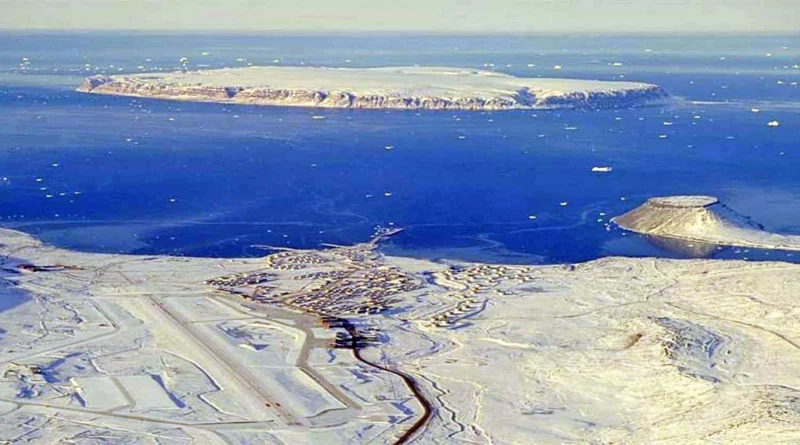50 Years Ago a U.S. Military Jet Crashed in Greenland–with 4 Nuclear Bombs Onboard
Source : scientificamerican.com – January 20, 2018
Abonnez-vous au canal Telegram Strategika pour ne rien rater de notre actualité
Pour nous soutenir commandez les livres Strategika : “Globalisme et dépopulation” , « La guerre des USA contre l’Europe » et « Société ouverte contre Eurasie »
On January 21, 1968, the cold war grew significantly colder
The following essay is reprinted with permission from The Conversation, an online publication covering the latest research.
Fifty years ago, on Jan. 21, 1968, the Cold War grew significantly colder. It was on this day that an American B-52G Stratofortress bomber, carrying four nuclear bombs, crashed onto the sea ice of Wolstenholme Fjord in the northwest corner of Greenland, one of the coldest places on Earth. Greenland is part of the Kingdom of Denmark, and the Danes were not pleased.
The bomber—call sign HOBO 28—had crashed due to human error. One of the crew members had stuffed some seat cushions in front of a heating vent, and they subsequently caught fire. The smoke quickly became so thick that the crew needed to eject. Six of the 7 crew members parachuted out safely before the plane crashed onto the frozen fjord 7 miles west of Thule Air Base—America’s most northern military base, 700 miles north of the Arctic Circle.
The island of Greenland, situated about halfway between Washington D.C. and Moscow, has strategic importance to the American military—so much so that the United States had, in 1946, made an unsuccessful bid to buy it from Denmark. Nevertheless, Denmark, a strong ally of the United States, did allow the American military to operate an air base at Thule.
The crash severely strained the United States’ relationship with Denmark, since Denmark’s 1957 nuclear-free zone policy had prohibited the presence of any nuclear weapons in Denmark or its territories. The Thule crash revealed that the United States had actually been routinely flying planes carrying nuclear bombs over Greenland, and one of those illicit flights had now resulted in the radioactive contamination of a fjord.

Project Crested Ice Wikimedia
The radioactivity was released because the nuclear warheads had been compromised. The impact from the crash and the subsequent fire had broken open the weapons and released their radioactive contents, but luckily, there was no nuclear detonation.
To be specific, HOBO 28’s nuclear weapons were actually hydrogen bombs. As I explain in my book, “Strange Glow: The Story of Radiation,” a hydrogen bomb (or H-bomb) is a second-generation type of nuclear weapon that is much more powerful than the two atomic bombs dropped on Hiroshima and Nagasaki. Those two bombs were “fission” bombs—bombs that get their energy from the splitting (fission) of very large atoms (such as uranium and plutonium) into smaller atoms.




